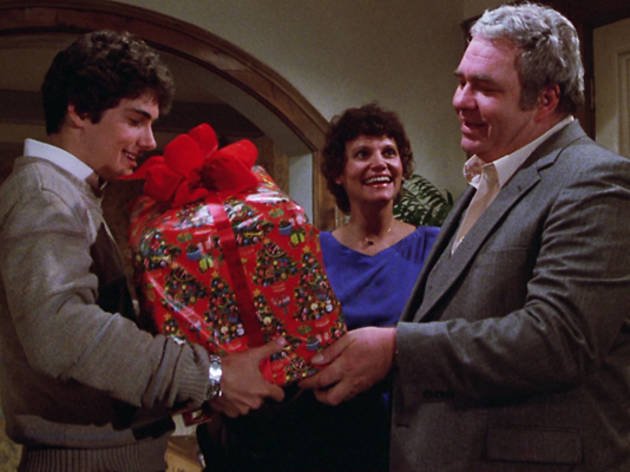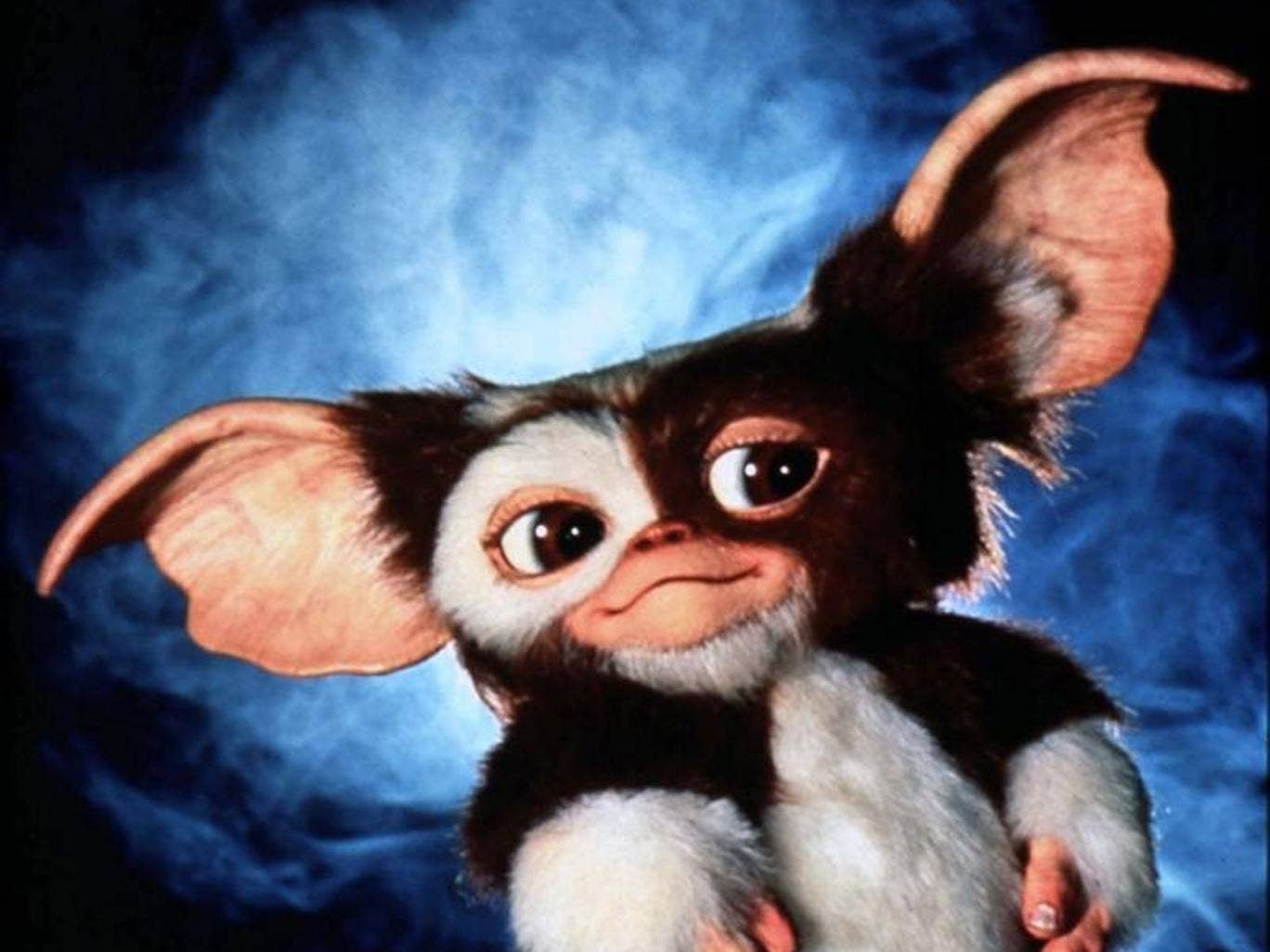[Editorial] 12 Ghouls of Christmas: Gremlins (1984): Horror for Children?
*contains spoilers for a film from 1984… but you really should have seen it by now*
I am not a huge fan of the festive period, I have a very comfortable black jumper that says, “I Don’t Hate Christmas, I Just Hate People”, and those who know me well are aware of how accurately that represents me (I much prefer Halloween - let’s be honest, it’s more fun). There are, however, a handful of Xmas films that I enjoy, all of which have a rather satirical or dark side. The film that tops this list, the one that I will watch repeatedly (and not just during the holiday period) is Gremlins (1984). This cult classic is the greatest Christmas movie of all time (sorry Die Hard fans), but is also the perfect gateway into horror for children. For its dark themes, Gremlins caused a lot of debate in the certification world, and is partially responsible for the creation of the PG-13 rating in the USA (look it up, Spielberg had a few issues with certification in the eighties).
For those who haven’t seen this iconic movie, the story centres around Billy (Zach Galligan), a twenty-something young man who receives a strange creature, a Mogwai called Gizmo, from his father for Christmas. With the pet comes three very specific rules – Don’t expose it to bright lights (sunlight will kill it), don’t get it wet, and never ever feed it after midnight. Obviously, in classic movie reasoning, all of these rules are ignored, resulting in Gizmo multiplying and the new Mogwais transforming into hideous Gremlins intent on chaos, destruction, and murder.
On its release in the UK in June 1984 (Summer, I know, it’s still a Christmas film), the BBFC gave Gremlins a 15 certificate, the 12 and 12A certificates were nowhere to be found in the eighties, and it seemed ‘too scary’ to be a PG. The full BBFC Report for this can be found here. Most of the reviewers made comments regarding the destruction of Christmas spirit and the terror children may feel seeing horror scenes unfold in familiar and safe spaces like home and school. One reviewer suggested that the death of the teacher, Mr Hanson (Glynn Turman), be removed because a teacher dying may be too distressing to watch? I’m not sure about other people, but I used to sing songs about teachers meeting their end when I was young, and the needle in Mr Hanson’s bum certainly makes that scene more comical than unsettling.Gremlins was also compared to such films as The Never-ending Story (another great horror film for kids), which apparently wasn’t as traumatising, even with Gmork, that horrific wolf animatronic…A final comment worth mentioning from the reports is regarding Kate (Phoebe Cates)’s story of her father’s death – dressed as Santa, climbing down the chimney as a surprise, slipping and breaking his neck. Funnily enough, the father’s demise didn’t seem to be the issue, it was the fact that the children would learn that Santa wasn’t real from this story. Much more upsetting than a parent dying and his body not being found for days.
I for one revelled in the horror scenes as a young child, the almost slapstick portrayal of most people’s expiration in this film really gave birth to my sense of humour as an adult (here’s looking at you Mrs Deagle, flying out the window and landing bottom up in the snow). The best of these scenes, in my opinion, has to be Billy’s mum teaching the Gremlins a lesson in her kitchen. Even on re-watch I find myself shouting out in glee as she pushes the first creature into her blender, whizzing it to pulp. This is followed by the stabbing of another and a beautiful popping sound as a third explodes in the microwave. Now, before the naysayers pipe up, I understand that this sounds too gory for children. However, the genius of this scene, of the entire film perhaps, is that Gremlins bleed green, not red. That distance between their biology and our own makes the entire construct so much more palatable, we aren’t watching bodies being obliterated that we can relate to on a visceral level.
Despite this, one scene that frightened me a little in my youth was the final jump scare. The heroes triumph, Gizmo opens the blinds on Stripe, the leader of the Gremlins, revealing bright sunlight before killing him just as he attempts to jump into a fountain to multiply once again. The prolonged face melting shot was gruesome enough, it was very reminiscent of a scene in Indiana Jones and the Raiders of the Lost Ark (which was a PG on its release by the way). But, as the protagonists gather their thoughts, Stripe’s skeleton leaps from the fountain for one last attack, only to bubble down to goo on the floor at Billy’s feet. Although the green gore is utilised again in this scene, I still shudder at the thought of that corpse leaping out for one last scare. At least Barney the dog doesn’t try and eat the stuff that remains.
As you can probably tell, I hold Gremlins close to my heart. Gizmo still remains the cutest little puppet to ever grace the big screen, and the Christmas setting puts a twist on the overly merry themes that tend to haunt this season.Although there are some quite outdated and at times problematic representations in this film (namely Grandfather (played by Keye Luke) who is a poorly written stereotype of Chinese culture, and Mr Futterman (Dick Miller)’s constant comments about ‘foreign’ cars and technology), the rest of Gremlins still holds up; the effects aren’t schlocky in modern standards, perhaps because a lot of what you see on screen are practical puppetry and gore.
In 2012, the BBFC decided to recertify Gremlins as a 12A, which is a far more suitable certificate; it gives parents the freedom to decide whether children younger than twelve years old will be able to cope with the horror and gore, without cutting off what I believe is the target audience of this movie. The only important question that remains at this writer’s fingertips is where on earth did the Gremlins find tiny Gremlin-sized guns? Even as an adult I don’t understand why they have firearms…







![[Editorial] Soho Horror Film Festival: Interview with Aimee Kuge on Cannibal Mukbang](https://images.squarespace-cdn.com/content/v1/5fe76a518d20536a3fbd7246/1701808004722-9M8SZ2UXY52QBQBR4NTI/img20230818_15150780.JPG)
![[Editorial] 9 Horror Nintendo Switch Games To Play](https://images.squarespace-cdn.com/content/v1/5fe76a518d20536a3fbd7246/1697214470057-3XZXX8N4LYIMDFWS6Z3P/Screenshot+2023-10-13+at+17.20.13.png)
![[Mother of Fears] Mothering in Silence in A Quiet Place (2018)](https://images.squarespace-cdn.com/content/v1/5fe76a518d20536a3fbd7246/1696445921315-HZJ2DZYQIH6VVWXBO2YL/Screenshot+2023-10-04+at+19.52.29.png)
![[Event Review] Highlights from Mayhem Film Festival 2023](https://images.squarespace-cdn.com/content/v1/5fe76a518d20536a3fbd7246/1697624582491-MPT2VB9RRGU6OG7L6UKL/Mayhem+2023.jpg)
![[Editorial] Mayhem Festival: Interview with Thomas Sainsbury on Loop Track (2023)](https://images.squarespace-cdn.com/content/v1/5fe76a518d20536a3fbd7246/1697186472899-WC4RR0TW7L7LMFEBGPA2/Tom+Sainsbury.jpg)
![[Editorial] Keeping Odd Hours: A Retrospective on Near Dark (1987)](https://images.squarespace-cdn.com/content/v1/5fe76a518d20536a3fbd7246/1696445070868-HU9YIL3QPBCL1GW47R3Z/Screenshot+2023-10-04+at+19.36.53.png)
![[Editorial] 5 Female Focused Horror Book Recommendations](https://images.squarespace-cdn.com/content/v1/5fe76a518d20536a3fbd7246/1696441981361-52EQCTJ7AT2QF1927GM7/919xtm6d3fL._AC_UF894%2C1000_QL80_.jpg)
![[Editorial] What to Watch at This Year's Cine-Excess International Film Festival 2023](https://images.squarespace-cdn.com/content/v1/5fe76a518d20536a3fbd7246/1697213510960-REV43FEOZITBD2W8ZPEE/Screenshot+2023-10-13+at+17.01.15.png)
![[Editorial] Cherish Your Life: Comfort in the SAW Franchise Throughout and Beyond the COVID-19 Pandemic](https://images.squarespace-cdn.com/content/v1/5fe76a518d20536a3fbd7246/1695487675334-MYPCPYYZQZDCT548N8DI/Sc6XRxgSqnMEq54CwqjBD5.jpg)
![[Editorial] The Art of Horror in Metal](https://images.squarespace-cdn.com/content/v1/5fe76a518d20536a3fbd7246/1695486401299-E5H2JNNJT26HKN0CI7WC/Screenshot+2023-09-23+at+17.20.28.png)














![[Editorial] 10 Films & Events to Catch at Soho Horror Film Fest 2023](https://images.squarespace-cdn.com/content/v1/5fe76a518d20536a3fbd7246/1700819417135-299R7L4P0B676AD3RO1X/Screenshot+2023-11-24+at+09.41.52.png)
![[Editorial] 9 Best Slashers Released Within 10 Years of Scream (1996)](https://images.squarespace-cdn.com/content/v1/5fe76a518d20536a3fbd7246/1695478839037-LOFHGVM3H6BMSZW7G83M/Screenshot+2023-09-23+at+15.15.11.png)
![[Mother of Fears] Mother Vs. Monster in Silent Hill (2006)](https://images.squarespace-cdn.com/content/v1/5fe76a518d20536a3fbd7246/1695485781119-H6GNP0G3J2TLPAOIABV7/Screenshot+2023-09-23+at+17.11.56.png)
![[Editorial] 9 Terrifying Cerebral Visions in Horror Movies](https://images.squarespace-cdn.com/content/v1/5fe76a518d20536a3fbd7246/1693509801235-X23OL50T1DVGECH0ZJK2/MV5BMjQ0MTg2MjQ4MV5BMl5BanBnXkFtZTgwMTU3NDgxMTI%40._V1_.jpg)
![[Mother of Fears] I Don’t Wanna Be Buried in a Pet Sematary (1989) and (2019)](https://images.squarespace-cdn.com/content/v1/5fe76a518d20536a3fbd7246/1691328766069-QFNAVJOMFZVZ5CLU1RWM/Screenshot+2023-08-06+at+14.23.13.png)

Now it’s time for Soho’s main 2023 event, which is presented over two weekends: a live film festival at the Whirled Cinema in Brixton, London, and an online festival a week later. Both have very rich and varied programmes (with no overlap this year), with something for every horror fan.